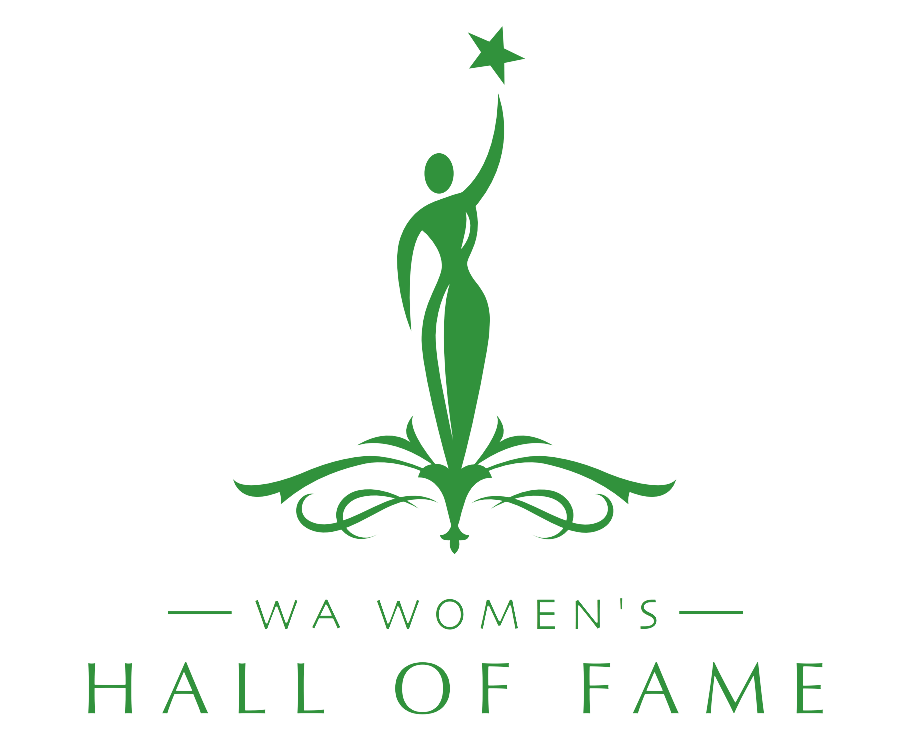2021 ROLL OF HONOUR
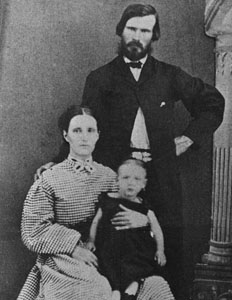
Jane Adams- 1851 to 1934
Affectionally known later in life as ‘Granny Adams’, Jane was an agricultural pioneer who was born in Toodyay. After marrying she settled in Mangowine. Living in relative isolation, Jane decided to keep weather records for the meteorological office, which she did for 47 years. She was widowed at 44 and along with raising 9 children, Jane ran her property, and won a tender to do a mail run with her son. After 1900, the government opened land in the area and ‘Granny Adams’ became a mentor for inexperienced farmers who came to her for help and advice. Jane was inducted to the Western Australian Agricultural Hall of Fame in 2003 for her many outstanding contributions and spirit.
Photo Credit: State Library of Western Australia 6006B/4
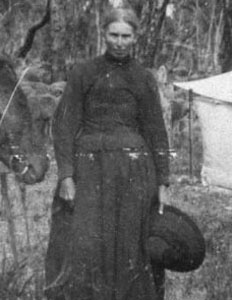
Pru Arber- 1852 to 1932
Born in Mount Barker, Pru had no formal education. She grew up with the local Aboriginal children learning bush lore from them – skills she later used to survive alone in the bush. Acquiring her first flock through hand-raising motherless lambs, she began her nomadic lifestyle of a shepherdess. After surviving a lightening-strike, she started wearing a white apron so her body could be easily identified if she died in the bush. Pru inherited money and bought pastoral land but despite becoming a wealthy woman, she continued her frugal lifestyle. Her shepherd bells are on display at the Mount Barker Museum.
Photo Credit: State Library of Western Australia 66160P
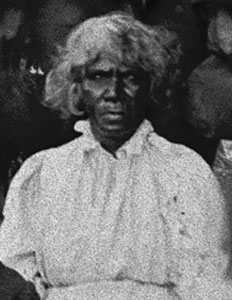
Fanny Balbuk Yooreel– 1840 to 1907
Fanny was a traditional Whadjuk yorga (woman), born on Matagarup (Heirisson Island) in the Swan River, and a resistance fighter. She lived through the early years of the Swan River Colony and British colonialisation of Perth in the 19th century. Despite the building of houses and fences which prevented her from accessing her country and living her culture, Fanny continued to walk her traditional bidi (track) to gather bush foods, knocking down fence pailings in her path. She was arrested many times but still she protested, as Daisy Bates noted, she would “stand at the gates of Government House, cursing everyone within, because the stone gate guarded by a sentry enclosed her grandmother’s burial ground” (Bates 1938).
Photo Credit: State Library of Western Australia 253420PD
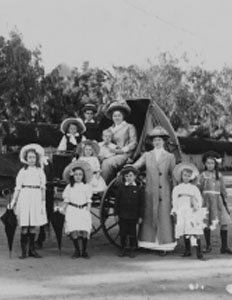
Francies Cherry- 1872 to 1941
Nurse Frances Cherry was a pioneer District Nurse in WA, when in 1908 she became one of the founders, with Mrs. Muriel Chase and Sister S L Copley, of Silver Chain. Her appointment as District Nurse came after two years nursing in Kalgoorlie where she went to help fight the typhoid epidemic. In 1918, she became Superintendent of Nurses, with four nurses working under her, but continued with her own rounds. Spending over 35 years in arduous solitary work, in pony and trap; visiting patients from Perth to Fremantle, and beyond.
Photo Credit: State Library of Western Australia BA1200/68
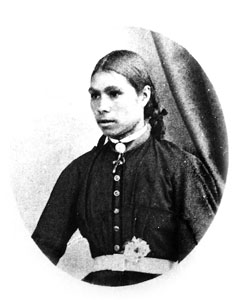
Mary Ellen Cuper- 1847 to 1877
Born as Ellen Pangieran in Bunbury to Aboriginal yorga (woman) Yanjipp, Mary was sent to Bishop Salvado’s Benedictine mission in New Norcia for education. She married in the district and became Cuper. The commencement of a telegraph line to Geraldton via New Norcia required a full-time telegraphist. Mary Ellen trained for the work and when the position of postmistress at Victoria Plains became vacant in 1873, the superintendent of telegraphs James Fleming reported that Salvado had ‘an applicant in a female Aboriginal who is perfectly familiar with the telegraph Code’. Mary Ellen was formally appointed in January 1874 with an annual salary of £30.
Photo Credit: With acknowledgements to the archives of the Benedictine Community of New Norcia73397P
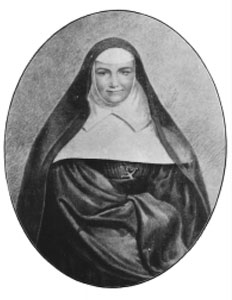
Mother Ursula Frayne- 1816 to 1885
Born in Ireland, Ursula entered the Institute of Mercy (Sisters of Mercy) in 1834. She was appointed Superior of the institute’s first foreign mission foundation and arrived in Perth in 1846, with Sisters to staff a proposed school. The Sisters of Mercy experienced great hardship and were shocked by the conditions under which they had to work and live but refused to abandon the mission. She is credited with opening the first Mercy school in Australia and introducing secondary education into WA. There is a bronze plaque in St Georges Terrace which honours Mother Ursula Frayne for her contribution to education.
Photo Credit: Courtesy Ursula Frayne Catholic College
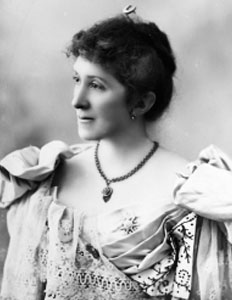
Margaret Forrest- 1844 to 1929
Arriving in WA in 1850, Margaret lived in Guildford and married surveyor John Forrest who became the first premier of Western Australia. Margaret became the president of the West Australian Society of Arts, and foundation member of the Karrakatta Club (the first Women’s Club in Australia). She was President of the Australian Women’s National League and the Women’s Executive of the National Political League of Western Australia, and the Women’s Executive of the Liberal League of Western Australia. Throughout her life, Margaret continued her life-long passion for painting the State’s unique wildflowers, which no doubt led to her close involvement in the development of Kings Park.
Photo Credit: State Library of Western Australia 090786PD
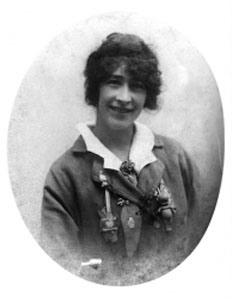
May Gibbs- 1877 to 1969
In 1885, eight year old May, moved with her family to Harvey. ‘Entranced’ by the unusual flora, she started drawing and writing about the bush from an early age. Moving to South Perth two years later, her first illustration was published in the 1889 W.A. Bulletin Christmas edition. Regarded as one of Australia’s first resident professional woman cartoonists, her books ‘Gumnut Babies’, and ‘Gum Blossom Babies’ were published in 1916. Followed by ‘Tales of Snugglepot and Cuddlepie’ (1918). May’s much-loved books show her deep appreciation of Australia’s unique flora. The May Gibbs Art Museum and Local History Gallery, South Perth, exhibits a selection of May’s original artworks.
Photo Credit: CourtesyMay Gibbs Art Museum and Local History Gallery
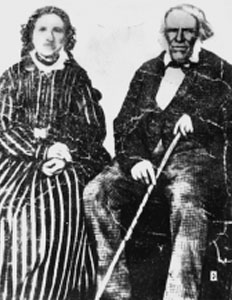
Helen McGregor Scott- 1793 to 1883
A true pioneer and a tireless servant of early Western Australia, Helen arrived in 1831. The daughter of a Doctor she became a nurse, and nursing was her life. Living in near Bunbury, many sought her services, and she was able to use her skills to treat people including Aboriginal peoples’ injuries, such as burns and cuts. Medicine was scarce in that period and her home became a first-aid station. She was credited for her skills in setting broken limbs and was always in demand as a midwife. Helen was dedicated to the care of the sick and needy.
Photo Credit: Courtesy Bunbury Historical Society
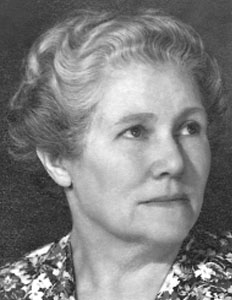
Mary Ann Millsteed- 1887 to 1949
Mary was a pioneer settler in the Wongan Hills dristrict in the 1900’s. Beyond raising 8 children and the farm work, Mary was the district surrogate midwife. There were no medical services in the area and despite having no formal training, she never hesitated to take out the sulky at any hour, day or night, and help bring a new life into the world. Along with establishing a productive wheat and sheep farm with her husband, she played a significant role in establishing the Wongan Hills Progress Association, to campaign for local ammenities, schools, a regular mail service and a railway.
Photo Credit: Courtesy Millsteed Family Collection
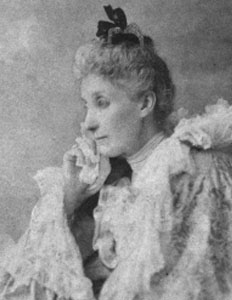
Madeline Onslow- 1851 to 1926
Madeline arrived in Western Australia with her husband Sir Alexander Onslow in 1880. She was the first President of the Karrakatta Club and worked for the women’s suffragette cause. She was instrumental in in forming the Women’s Franchise League, which lobbied for women’s vote. It was granted in this State in 1899. A few years later in 1901, Lady Madeleine Onslow and Dr Athelstan Saw led a group which founded the Home of Peace for the Dying and Incurable. The organisation is now known as the Brightwater Care Group.
Photo Credit: State Library of Western Australia 4538B
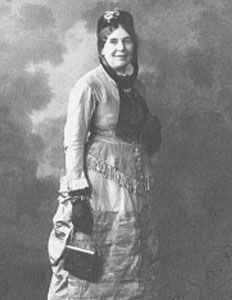
Emily Harriett Pelloe- 1877 to 1941
Emily was an acclaimed author of botanical illustrated publications. Her first book, Wildflowers of Western Australia published in 1921, is claimed to be the first book in the English language about WA’s local flora. She painted watercolour landscapes of the Australian bush. Over 400 of her wildflower paintings are housed at the UWA in Saint Catherine’s College. She was President of the Women Writers’ Club and supported the proposed women’s university college at University of WA, known as Saint Catherine’s College. Emily was acknowledged for stimulating interest in women’s affairs, with a focus on the welfare of mothers and children.
Photo Credit: Wikimedia Commons
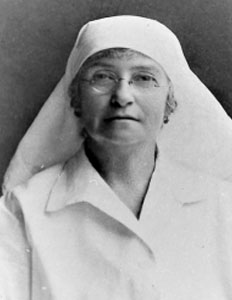
Nurse Alice Maud Mary Stockley- 1866 to 1945
Nurse Alice Maud Mary Stockley was a registered midwife and the Founder of Swan Maternity Hospital. She arrived in Fremantle in 1907, and a few years later started a practice in East Perth. Securing land in West Perth she built, and opened Nurse Stockley Maternity Hospital (later renamed Swan Maternity Hospital), three years before King Edward Maternity Hospital. Over the years she opened another hospital also in Newcastle Street, Highercrombie Maternity Hospital.
Photo Credit: Courtesy Stockley Family Collection
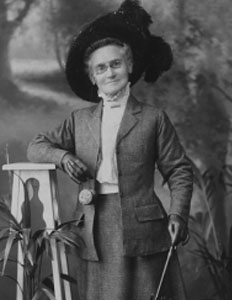
Mary Hynes Swanton- 1861 to 1940
A tailoress, Mary arrived in WA in 1889 and as trade unionist she was determined to make a difference, and she did. She joined the Australian Natives Association in 1900 (later being the first woman to be given a life membership), and she was the foundation member of the Perth Tailoresses Union until it amalgamated with the Trade Union. Mary maintained a campaign to expose and investigate ‘sweating’ and child labour in the Perth clothing trades and presented evidence at enquiries. In 1907 she was elected the first woman president of the Tailors and Tailoresses’ Union of Western Australia and was a prominent member of the Children’s Protection Society.
Photo Credit: State Library of Western Australia, BA743/1
